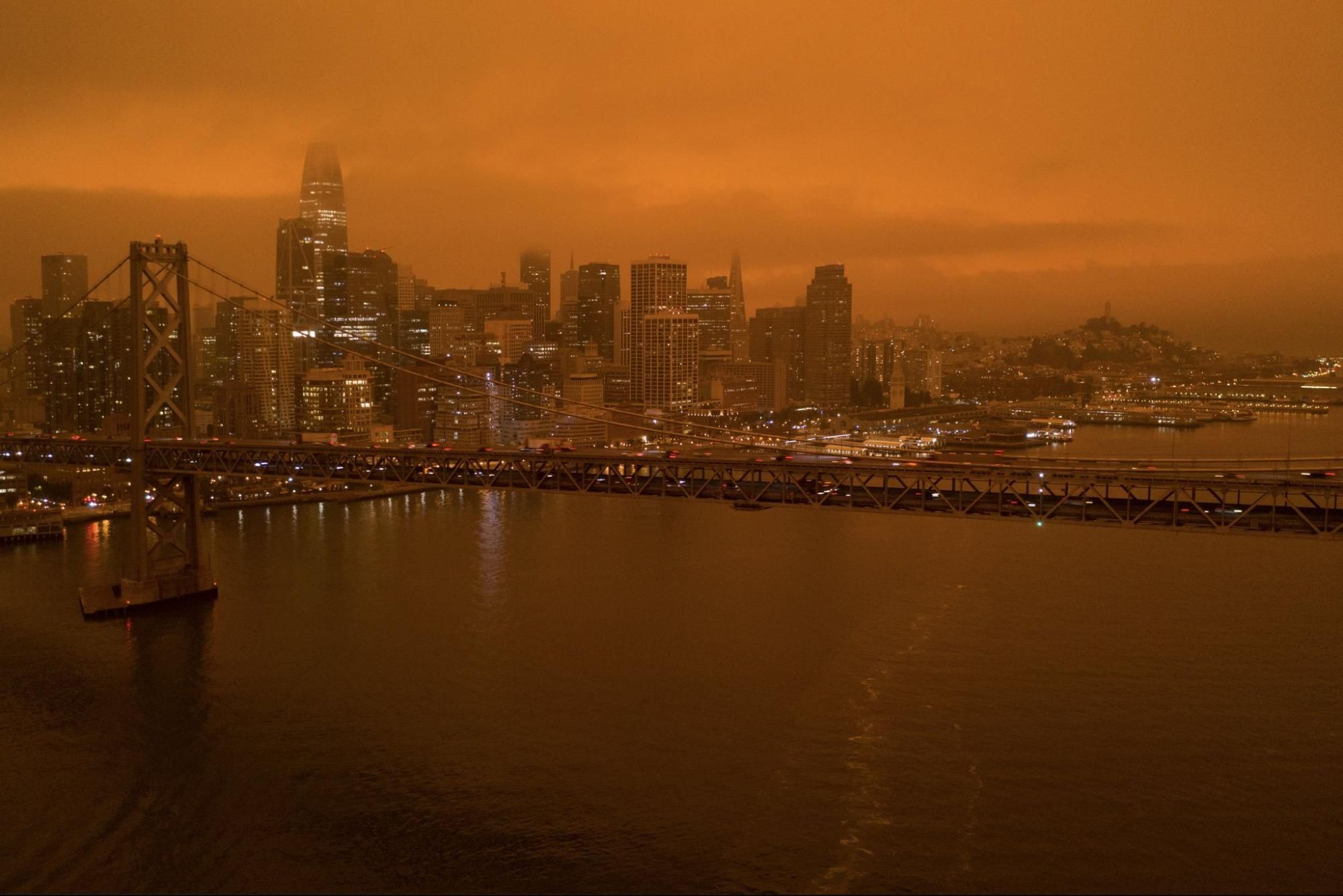
The Historical Land Practices Behind California's Fires
Fire has always been a part of California’s ecology. History helps explain why unprecedented, one-in-a-century events are now happening on a near-annual basis.
Here at Long Now’s offices in San Francisco, we are in the midst of California’s fire season. The fire season is an ever-expanding span of time typically judged to peak between August and October, though the California Department of Forestry and Fire Protection has warned for years of the dawn of a nearly year-round season. The Dixie Fire, now almost half contained, spread over 700,000 acres of land in the Northeast of the state, while the Monument Fire to its West still rages over the comparatively small span of 150,000 acres.
Fire has always been a part of California’s ecology. The plant life of the state, from the dusty chaparral of the central and southern coasts to the giant sequoias of the state’s redwood forests, has adapted to millions of years of natural, lightning-sparked fire through fire-germinated and heat-resistant seeds. Yet blazes of this size, frequency, and persistence throughout the year are unprecedented, one-in-a-century events happening on a near-annual basis.

The causes of the fire season’s intensification in recent years are many. Climate change is a driver for many of them, from the increasingly dry climate of the state to the earlier beginning of snowmelt from the Sierras. Yet an older set of human decisions about the earth also plays a key role. In 02016, ecologist Stephen Pyne gave a Seminar at Long Now about the history of humanity’s relationship with fire, including the “century of misdirection about wildfire” brought about by the exportation of European norms on fire safety to the drier, fire-germinated ecosystems of the Americas and Asia.
In The Drift, anthropologist Jordan Thomas lays out how the shift in California specifically from Indigenous Californian fire practices, which typically included controlled, intentional burns, to European and later American fire suppression has increased the size and damage caused by wildfires.
As the 20th century ticked by, forests became tinderboxes. Just as fuel accumulated in the trees, carbon accumulated in the atmosphere, and with each slight temperature increase, high-risk burn zones spread outwards from the mountains. Meanwhile, populations spread farther from urban cores, increasing the chance of fire ignitions.These factors have converged to ensure that fires, when they do occur, are now explosive. Forest managers are beginning to backtrack against the Euro-American legacy of fire suppression inherited from Arrillaga and his heirs, but, as fire seasons expand and winter months contract, they may be running out of time.
Fire suppression policies have shaped California’s ecosystems since the days of Spanish colonialism in the region, and only strengthened over the course of the prevention-focused twentieth century regime of the U.S. Forest Service. In recent years, land stewardship and Indigenous rights groups in Northern California and elsewhere have pushed for greater investment in traditional fire management practices, drawing on millennia of successful human-ecosystem management to deal with a modern crisis.
Further reading
- For the full story, which includes first hand accounts of firefighting through the Dolan Fire of August 02020, read Thomas’ piece in The Drift here.
- Ecologist Laura Cunningham’s 02011 Seminar about Ten Millennia of California Ecology provides a long and broad view of the ecological systems that have shaped Californian life
- Science Journalist and Historian Charles C. Mann’s 02012 Seminar about Living in the Homogenocene grapples with what he terms the “eco-convulsions” of the past 500 years, including mass deforestation events.
Join our newsletter for the latest in long-term thinking
Subscribe